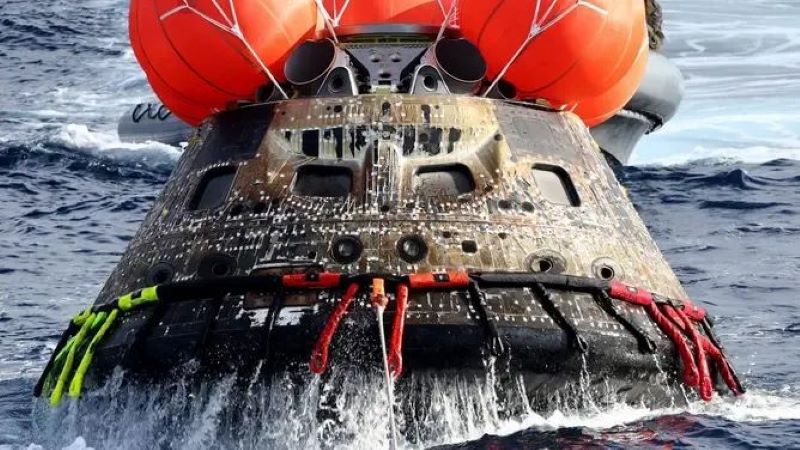As expected, the U.S. Artemis manned lunar program has been delayed once again. According to NASA’s latest schedule, the Artemis II mission, which aims to carry astronauts around the Moon, will not take place before April 2026. The Artemis III mission, planned for a Moon landing, is now slated for no earlier than mid-2027. Both missions have been delayed by approximately six months compared to earlier plans.

There is growing concern in the United States that its manned lunar program might fall behind China’s. Many Americans have placed their hopes on Jared Isaacman, the NASA administrator nominated by President Trump. Isaacman previously flew aboard SpaceX’s Crew Dragon spacecraft for the first-ever commercial spacewalk, the “Polaris Dawn” mission, and maintains close ties with SpaceX CEO Elon Musk.
This raises the question: Can Isaacman and Musk resolve the current challenges facing the U.S. lunar program?
Let’s take a closer look at the current state of the Artemis program. It faces three major challenges: the unreliability of the Orion spacecraft, the Space Launch System (SLS) heavy-lift rocket, and the lunar spacesuits. NASA’s decision to delay the next crewed missions under the Artemis program stems from issues discovered during a thorough inspection of the Orion spacecraft following its return to Earth during the Artemis I mission at the end of 2022. The inspection revealed unexpected additional erosion on the spacecraft’s heat shield. The Orion spacecraft uses a “skip-entry” method to re-enter Earth’s atmosphere, which causes heat to build up on the outer layer of the heat shield. During Artemis I, parts of the heat shield on the spacecraft’s underside showed cracking and wear.
Earlier this year, Amit Kshatriya, NASA’s Deputy Associate Administrator for the Moon to Mars Program, stated that in addition to the unexpected heat shield erosion observed during the Artemis I mission, the Orion spacecraft also has design flaws in its life support systems. Certain electronic components affect multiple parts of the spacecraft’s life support system, including the carbon dioxide removal system. NASA ultimately decided to replace these electronic components, noting that “this will take a significant amount of time.” Furthermore, regulations require additional testing of the spacecraft once the replacements are complete to ensure flight safety. Additionally, defects were identified in the electrical components of Orion’s emergency escape system, a critical device that would carry astronauts to safety in the event of a rocket failure during launch.
While SpaceX’s Crew Dragon spacecraft has successfully completed multiple astronaut transport missions and even reached 1,400 kilometers above Earth during the first commercial spacewalk (“Polaris Dawn”), it remains uncertain whether it can handle the much stronger cosmic radiation near lunar orbit. In other words, despite its flaws, the Orion spacecraft is still irreplaceable for now.
As for the SLS heavy-lift rocket, often mocked within the aerospace industry as the “King of Delays” due to its numerous postponements, its biggest issue now is the prohibitively high cost of launches. NASA estimates that each SLS launch costs an average of $4 billion. In November, U.S. media reported that NASA is conducting a comprehensive review of the SLS program, which is said to have a “50% chance of being canceled.”

It is speculated that if the costly and problem-ridden SLS rocket is canceled, SpaceX’s Starship super-heavy rocket could become its replacement. The complete Starship system consists of a super-heavy booster and the Starship spacecraft, both of which are fully reusable, significantly reducing costs. In terms of technical specifications, Starship can deliver up to 100 tons to low Earth orbit, making it capable of transporting the Orion spacecraft to lunar orbit. Starship already plays a critical role in the current Artemis program: the lunar lander that will carry astronauts to the Moon’s surface is a modified version of the Starship spacecraft. Additionally, in low Earth orbit, modified Starships are planned to function as “space fuel depots,” refueling the lunar lander for its journey to the Moon.
However, Starship’s development is also significantly behind schedule. SpaceX estimates that the earliest tests of Starship’s in-orbit refueling capabilities won’t begin until March of next year. The development of the lunar lander is likewise incomplete. If Starship were to take over the task of launching the Orion spacecraft, it would need to improve its reliability and demonstrate the ability to “safely send humans into space and return them to Earth,” all of which require additional time.
The third major challenge facing the Artemis program is the delay in developing lunar spacesuits for astronauts. According to the BBC, spacesuits for lunar missions pose significant technical challenges. They must shield astronauts from harsh space radiation and protect against collisions with various space particles, essentially functioning as specialized “miniature crewed spacecraft.” In 2019, NASA unveiled its next-generation spacesuit, the XEMU (Exploration Extravehicular Mobility Unit), which consists of a pressurized suit and a portable life-support system. It includes numerous upgrades tailored to the needs of lunar exploration. However, progress has been slower than expected.
Under pressure to meet deadlines, NASA was forced to outsource the development of extravehicular spacesuits to Axiom Space. In December 2023, Forbes reported that a U.S. Government Accountability Office (GAO) report revealed significant challenges. Despite Axiom Space utilizing much of NASA’s previous data and experience to design new lunar spacesuits, substantial work remains to meet the “60-minute emergency life-support capability” requirement. The spacesuits are still in the “early stages of development.”

Another backup project, the next-generation spacesuits intended for the International Space Station, was also abandoned midway due to the withdrawal of the contractor, Collins Aerospace.
Previously, during the “Polaris Dawn” mission, Isaacman successfully tested a new spacesuit developed by SpaceX. This has led to speculation that it might become the basis for the next-generation U.S. lunar spacesuit. However, the current SpaceX spacesuit lacks a built-in life-support system, meaning that significant additional design work and testing will be required before it can be used for lunar missions.
In summary, while Elon Musk’s SpaceX can provide several alternative solutions for the Artemis program, none of them are ready for immediate use and will require extensive testing. As for reforming NASA’s bureaucratic structure, that would undoubtedly be an even longer and more arduous process.













Leave a comment